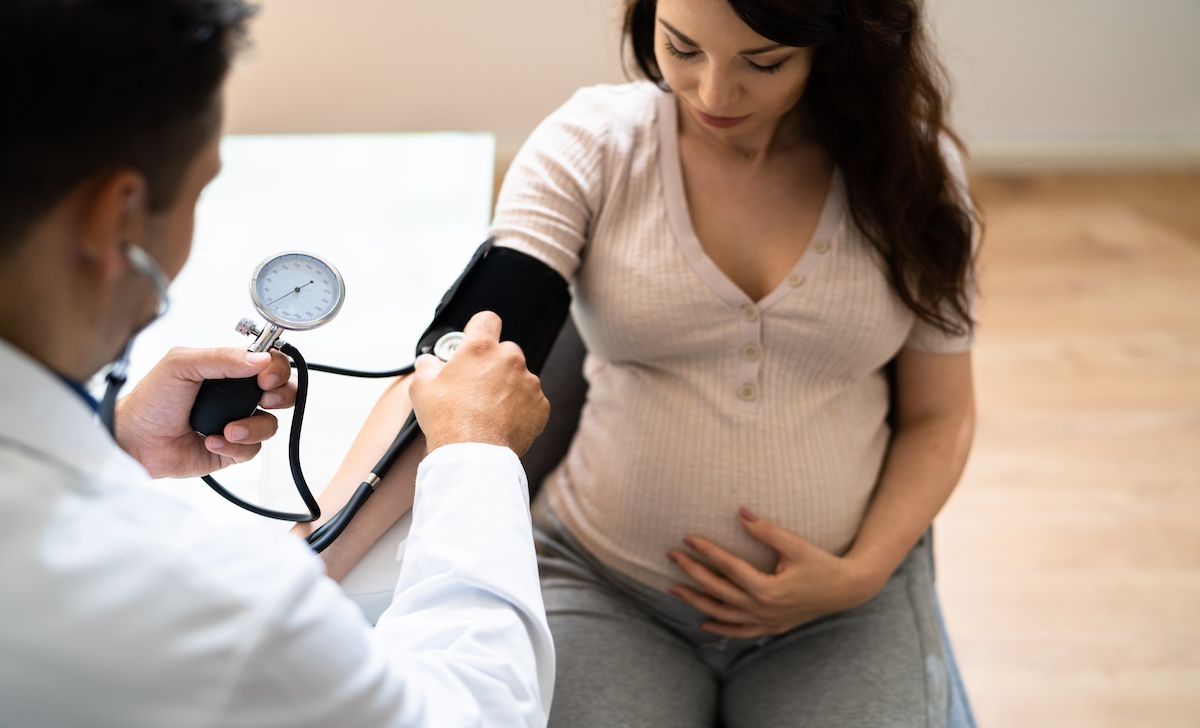- Center on Health Equity & Access
- Clinical
- Health Care Cost
- Health Care Delivery
- Insurance
- Policy
- Technology
- Value-Based Care
Association Between Hypertensive Disorders of Pregnancy, Cardiovascular Severe Maternal Morbidity During Delivery Hospitalization
Hemolysis, elevated liver enzymes, low platelet (HELLP) syndrome, and severe preeclampsia significantly elevate cardiovascular risk during delivery, study finds.
A study analyzing over 15 million US deliveries revealed an association between hypertensive disorders of pregnancy (HDP) and cardiovascular severe maternal morbidity (cvSMM).1

Patients with HELLP (hemolysis, elevated liver enzymes, and low platelet) syndrome faced the highest cardiovascular risks, followed by those with severe preeclampsia and chronic hypertension.
The recent research findings underscore the need for heightened attention to HDP subtypes, particularly HELLP syndrome, as critical risk factors for cardiovascular complications during delivery hospitalization.
The population-based cohort study was published in JAMA Network Open.
“Our findings delineate a differential risk of cvSMM according to HDP subtype, which supports the need to develop and evaluate cardiovascular interventions tailored to HDP subtypes during the acute setting,” the researchers wrote.
Cardiovascular disease (CVD) is the leading cause of maternal mortality in the United States and a major risk factor for severe maternal morbidity (SMM). In the US, approximately 60,000 women are affected by SMM annually, while significant racial and ethnic disparities exist.
At the Nurse Practitioner’s in Women’s Health (NPWH) 27th Annual Premier Women’s Healthcare Conference from September 25-28, 2024, in Chicago, Illinois, the Society for Women’s Health Research hosted a fireside chat, which increased awareness around disparities, screening, and prevention of CVD in pregnancy and postpartum was addressed.2
The study analyzed 15,714,940 obstetric deliveries between 2015 and 2019 using the United States National Inpatient Sample.1 Data from individuals diagnosed with various subtypes of HDP were analyzed, including gestational hypertension, chronic hypertension, preeclampsia without severe features, severe preeclampsia, and HELLP syndrome. Data was analyzed from October 2023 to February 2024.
The primary outcome was cvSMM, which included conditions like pulmonary edema, stroke, and acute myocardial infarction. The secondary outcome was overall SMM, which included cvSMM and other conditions like respiratory failure, severe postpartum hemorrhage, and sepsis.
Among the deliveries, 2,045,089 (13.02%) had HDP, 23,445 (0.15%) were affected by cvSMM, and 282,160 (1.80%) were affected by SMM. The mean (SD) age was 29 (6) years.
Individuals with HDP experienced a higher incidence of cvSMM compared with those without HDP (0.48% vs 0.10%, respectively). The highest risk was observed in patients with HELLP syndrome (adjusted risk ratio [aRR], 17.55; 95% CI, 14.67-21.01), followed by those with severe preeclampsia (aRR, 9.11; 95% CI, 8.26-10.04), and chronic hypertension (aRR, 3.57; 95% CI, 3.15-4.05).
While all HDP subtypes were linked to an increased risk of overall SMM, the association with cvSMM was notably stronger.
However, the researchers acknowledged some limitations. First, the use of an administrative dataset meant that factors associated with cvSMM, such as BMI, cardiovascular signs and symptoms, and imaging or lab results, were not available. Additionally, the dataset did not allow for linkage of multiple hospitalizations per patient, preventing the assessment of recurrent deliveries and postpartum readmissions. Misclassification bias may have also impacted the findings, particularly in cases where eclampsia or severe preeclampsia could have been misclassified or underreported.
Despite these limitations, the researchers believe the study highlights the need for close monitoring and intervention in pregnant individuals with HDP, especially those with HELLP syndrome, as they face the greatest cardiovascular risks during delivery.
“Our findings support the concept that individuals who go on to develop cvSMM in the context of HDP, and particularly HELLP syndrome, may represent a subset of patients with more pronounced systemic vascular dysfunction in the acute phase of HDP, potentially underlying the lifelong increased risk of cardiovascular disease after HDP,” the researchers wrote.
References
1. Malhamé I, Nerenberg K, McLaughlin K, et al. Hypertensive disorders and cardiovascular severe maternal morbidity in the US, 2015-2019. JAMA Netw Open. 2024;7(10):e2436478. doi:10.1001/jamanetworkopen.2024.36478.
2. Insights into the intersection of cardiovascular disease and maternal morbidity and mortality. Society for Women’s Health Research. Published September 26, 2024. Accessed October 3, 2024. https://swhr.org/resources/insights-into-the-intersection-of-cardiovascular-disease-and-maternal-morbidity-and-mortality/.
